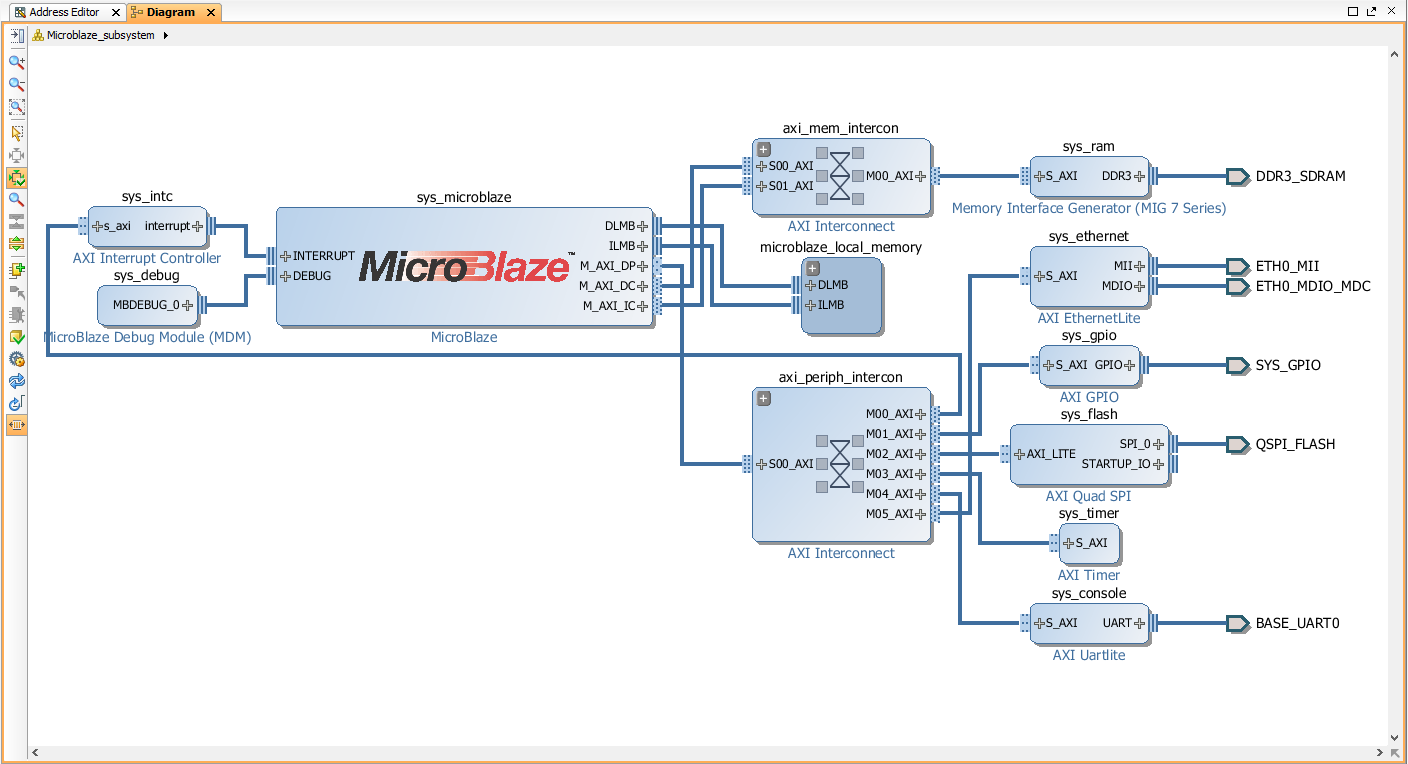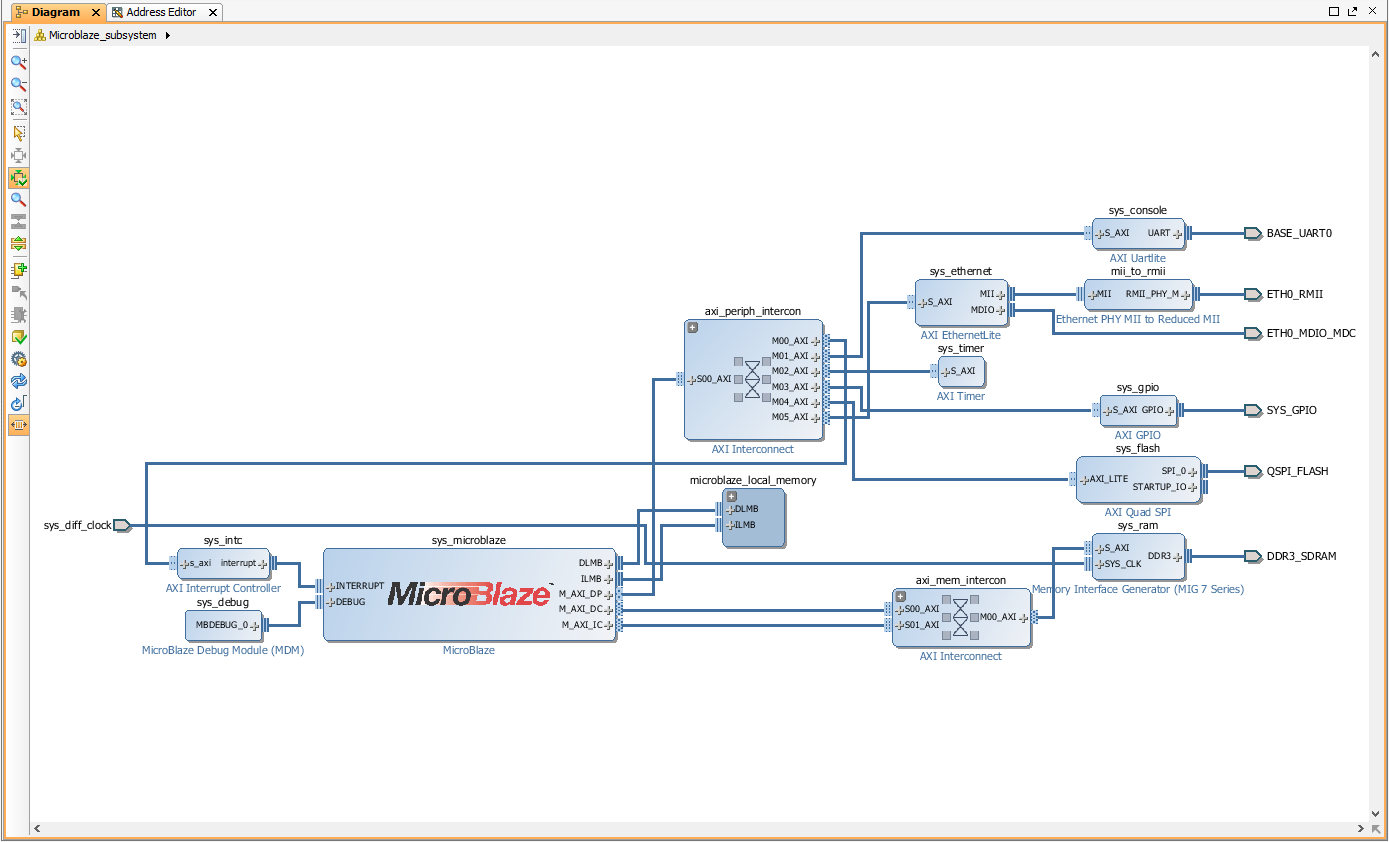
This is a minimal MicroBlaze based system that can boot Linux and is fully ready for integration into Xilinx Petalinux. This design will be provided for all Modules that can support it (except ZYNQ based ones). Primary requirement is external memory (32MByte or more). This design does fit into any 7 Series FPGA except Artix A15T.
List of supported modules
The goal for this minimal Linux system is to provide standard hardware that can be used with same software images without the need to recompile or customize them.
| IP Core | Base address | Interrupt | Board Part Interface | Notes |
|---|---|---|---|---|
| MicroBlaze | Configured with low end Linux option | |||
| MIG | 0x8000_0000 | DDR3_SDRAM | Configured as per Module settings | |
| LMB_RAM | 0x0000_0000 | For FS-BOOT, 8K minimum size | ||
| MDM | n/a | Configured without JTAG UART | ||
| AXI_INTC | 0x4120_0000 | |||
| AXI_TIMER | 0x41C0_0000 | 0 | 32 bit mode Dual Channel Mode | |
| AXI_UARTLITE | 0x4060_0000 | 1 | BASE_UART0 | Configured with 115200 baud |
| AXI_QUAD_SPI | 0x44A0_0000 | 2 | QSPI_FLASH | Connected to on-board Flash, standard mode |
| AXI_GPIO | 0x4000_0000 | not used | SYS_GPIO |


Minimal Linux capable System Block Diagram.
It is possible to use same unmodified fs-boot.elf, u-boot-s.bin and image.ub as long as the hardware matches the requirements.
This Design is based on min_linux further reducing the peripherals and functions: Debug and GPIO are removed. This design does fit into any Xilinx 7 series FPGA including A15T. On A15T device the design takes almost all logic resources, adding one more AXI peripheral would most likely go over 100% utilization. It is provided just show the utilization of the bare-minimal Microblaze-MMU system capable to run full Linux.
| FPGA | Slice used % | FF used % |
|---|---|---|
| A15T | 98% | |
| A35T | 49% | |
| A50T | ||
| A75T | ||
| A100T | ||
| A200T |
This Design is based on min_linux, adding AXI_Ethernetlite IP Core.
| IP Core | Base address | Interrupt | Board Part Interface | Notes |
|---|---|---|---|---|
| AXI_Ethernetlite | 0x40E0_0000 | 3 | sys_ethernet | on TE0710 is connectd to MII, on TE0712 ist connected with the core "MII to RMII" to RMII |

TE0710 uses MII Interface

TE0712 uses RMII Interface
